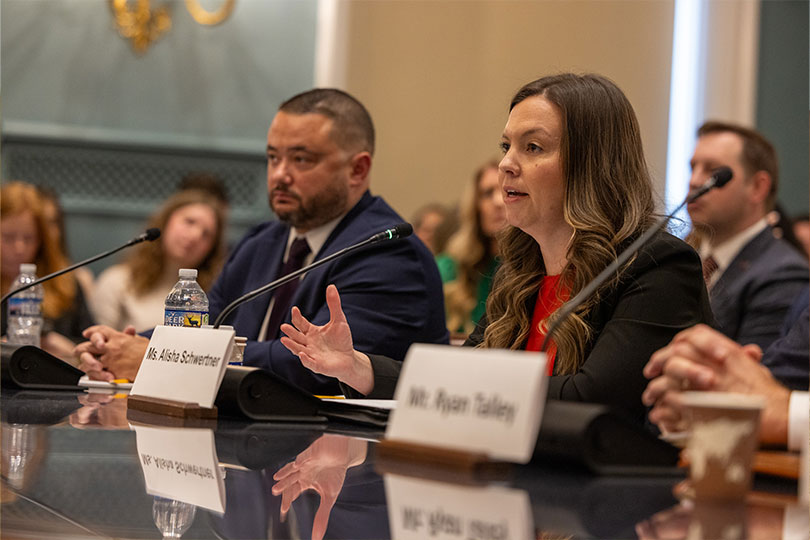By Julie Tomascik
Editor
Rising input costs, falling commodity prices and economic uncertainty threaten the livelihoods of family farmers and ranchers. That’s the message Alisha Schwertner, a Texas farmer, shared before the House Agriculture Committee on Tuesday.
Schwertner, a third-generation farmer from Miles, detailed the growing financial pressures facing agriculture, urging lawmakers to take decisive action to support the farm economy.
“The farm economy is at a crossroads,” Schwertner told the committee. “Farming has never been easy, but the past three years have been especially challenging for farm and ranch families. Many of us have experienced extreme and unpredictable weather disasters. Inflation, supply chain disruptions, and international conflicts are also to blame for rising input costs that cut into the already thin margins that we operate under.”
Schwertner and her husband grow cotton, corn silage, grain sorghum, wheat and hay. They also manage a small cow-calf herd and sell beef directly to consumers.
She brought a firsthand perspective on the struggles farmers face nationwide, including the historically low commodity prices.
She noted her husband’s grandfather sold his cotton for 63 cents per pound 60 years ago.
“Just two weeks ago, we were quoted 58 cents per pound,” she said. “That’s 5 cents less per pound than 60 years ago, yet in that same time, we have seen application costs increase by more than 300% and machinery costs go up by nearly 600%. There are even new costs including the cost to purchase seed and crop insurance.”
Unlike other industries, farmers cannot adjust prices to compensate for rising costs.
“We as farmers are ‘price takers,’ not ‘price makers,’” Schwertner said. “We are at the mercy of increasingly volatile markets that are influenced by forces far beyond our control.”
Trade challenges are also a major factor in the financial strain. Schwertner noted the lack of new trade deals for agriculture, warning that continued record trade deficits and potential retaliatory tariffs could devastate farm incomes.
“Trade is vitally important to agriculture as more than 95% of the world’s consumers live outside the United States,” she said. “Nearly one-third of U.S. farm income comes from exports.”
Many farmers are struggling to secure operating loans, adding to the economic pressure.
“For the first time in our tenure on our farm, we will not be able to repay our previous year’s operating line of credit in its entirety on its due date,” Schwertner said. “We are forced to have challenging conversations with our banker regarding loan renewal, and ultimately, paying the high interest rates that come with it.”
The financial squeeze is forcing tough decisions on farms across the country. According to the latest Census of Agriculture, the number of family farms has declined from nearly 2 million in 2017 to just under 1.9 million in 2023.
“We are constantly evaluating our options to diversify our income in order to not become a negative part of this statistic,” Schwertner, who serves on the Runnels County Farm Bureau board, said. “The reality is that we are often considering whether a future in farming is realistic for our family.”
Despite these challenges, Schwertner expressed hope that Congress will act to strengthen farm safety net programs and provide long-term solutions for rising input costs and volatile markets. She thanked lawmakers for bipartisan efforts to advance a modernized farm bill last year but stressed that more action is needed.
“Our food system, rural communities and national security depend on it,” she said. “We love what we do, but without adequate policies and support, we risk losing everything we, and past generations, have worked for. This includes the ability to pass on our legacy and profession to the next generation. For us, that happens to be our four boys.”
View the entire House Ag Committee hearing on examining the economic crisis in farm country.


Leave A Comment